Supernumerary Teeth
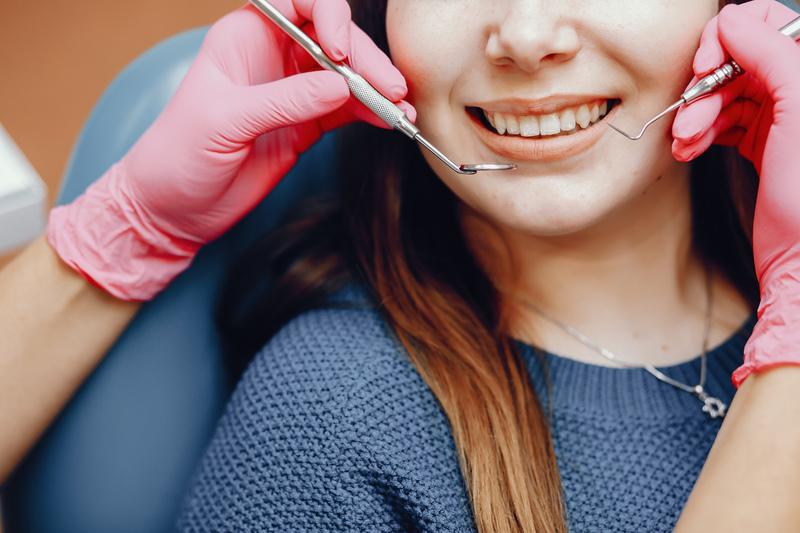
Polyodontia, hyperdontia, or supernumerary teeth is the phenomenon of extra teeth over and above the proper limit of 20 baby teeth and 32 permanent teeth for adults. The most common type of tooth abnormality is the upper jaw.
The extra incisors may be irregular (drop-shaped, chisel-shaped, cone-shaped) and cause discomfort when eating and speaking. Supernumerary teeth are observed in the number of 1 or more units. The more there are, the greater the pain can be.
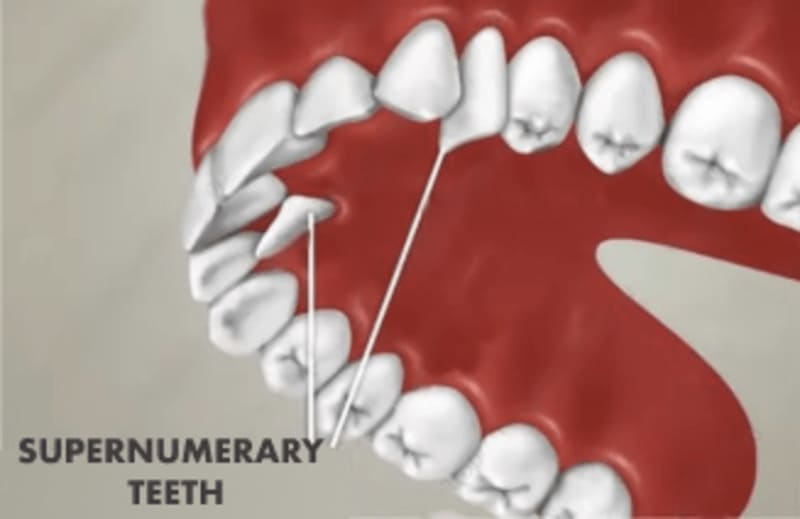
Scientists mention several possible reasons for supernumerary teeth:
- The presence of genes causing this atavism. The distant ancestors of modern humans had a more significant number of incisors, which have been rendered obsolete by evolution.
- Influence of pathogenic environmental factors on human embryo development.
- Hereditary diseases of various organs and systems.
Usually, incisors or molars are extra. These are located between the central teeth or near the premolars. Sometimes they are the unerupted rudiments of teeth, and cysts often form at the site of their formation. Often these teeth are smaller, irregularly shaped, crooked, misaligned, or rotated around their axis.
Statistics show that hyperdontia is more common in men. About 2% of the population suffers from it. In 70% of cases, there is one extra tooth; in 25% of cases, there are two teeth, and 5% of patients have three or more teeth. Among famous people, Freddie Mercury suffered from polyodontia (he had 36 teeth).
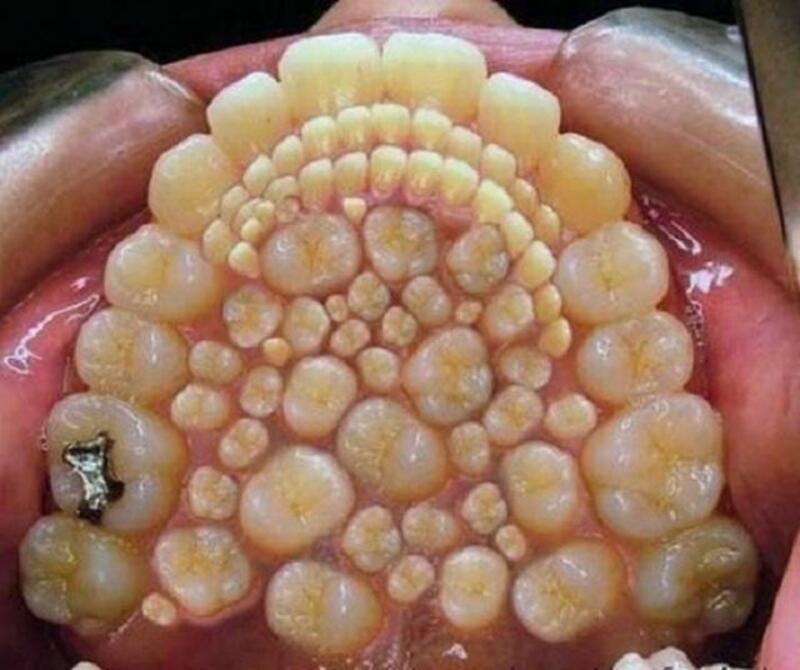
There are the following types of polyodontia:
- atypical – extra incisors or molars are not in the dentition line.
- typical – an extra tooth appears as an extra tooth in the dentition and is usually small.
- false – a delayed change in a child’s bite. Permanent incisors appear when the baby’s teeth have not fallen out. Instead, they are located behind, in front of, or outside the dentition. This occurs when there is insufficient solid food in the child’s diet. Removing the teeth that are preventing the permanent dentition from fitting correctly is urgent. Follow-up bite correction with plates or braces will be necessary in many cases.
- true – supernumerary teeth are permanent, but are not necessarily located in the dentition.
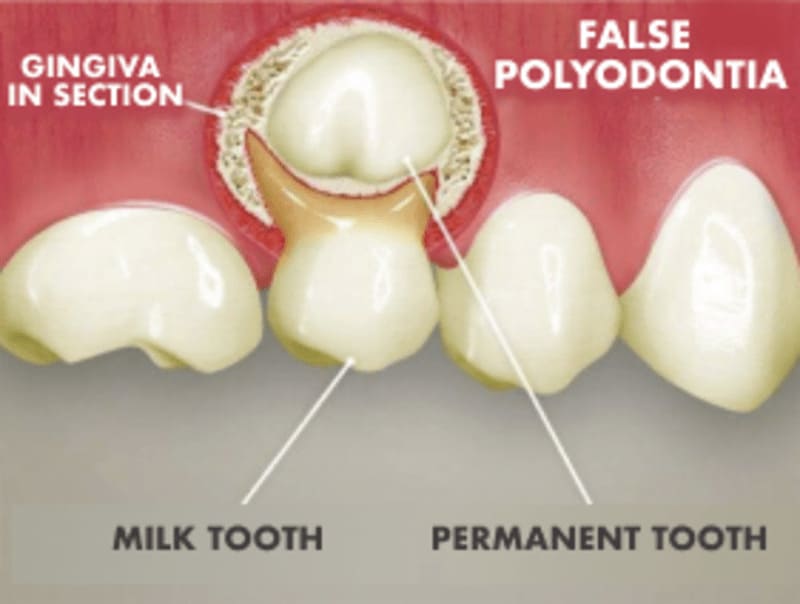
Is polyodontia dangerous? Sometimes people are not even aware of the presence of extra dental elements. X-rays, examinations, and treatment of other teeth detect them. Most often, hyperdontia is visible to the naked eye. It can cause severe damage to a person’s health and appearance. The main consequences are:
- malocclusion, an ugly smile, deformed facial features;
- inability to chew food properly, difficulty speaking;
- interference with the eruption of “normal” teeth, their dispositioning, and displacement;
- frequent and rapid tooth decay;
- gastrointestinal diseases.
The optimal solution for the treatment of hyperdontia is the extraction of extra teeth. A dental specialist can choose to keep the excess incisors or molars only if they align, do not deform the bite, and do not interfere with chewing and diction. A complete oral examination is necessary to diagnose and choose a surgical tactic. The dentist will also determine whether further orthodontic correction is required.
The earlier the disease is diagnosed and treatment started, the quicker the recovery and the lesser the adverse effects on the body.
What should I do if my teeth are very bad?
Many people postpone dentist visits until the last minute despite obvious signs of oral disease:
- Bleeding gums;
- Teeth sensitivity;
- Loose teeth;
- Stained teeth enamel;
- Cracks and chips;
- Supernumerary teeth.
A neglectful attitude towards one’s health may result in the necessity to remove diseased elements of the tooth row where a treatment could have been sufficient in the initial stages of the disease.
Typically, it is recommended to see a dentist at least twice a year for preventive check-ups and professional tooth cleaning. If the slightest signs of disease appear, you must go to the dentist immediately.
Treatment must be started immediately if a patient has poor oral health or supernumerary teeth. Before treatment begins, the dentist performs a complete oral cavity examination and prescribes a series of tests. Based on the diagnostic results, a dentist chooses a treatment strategy.
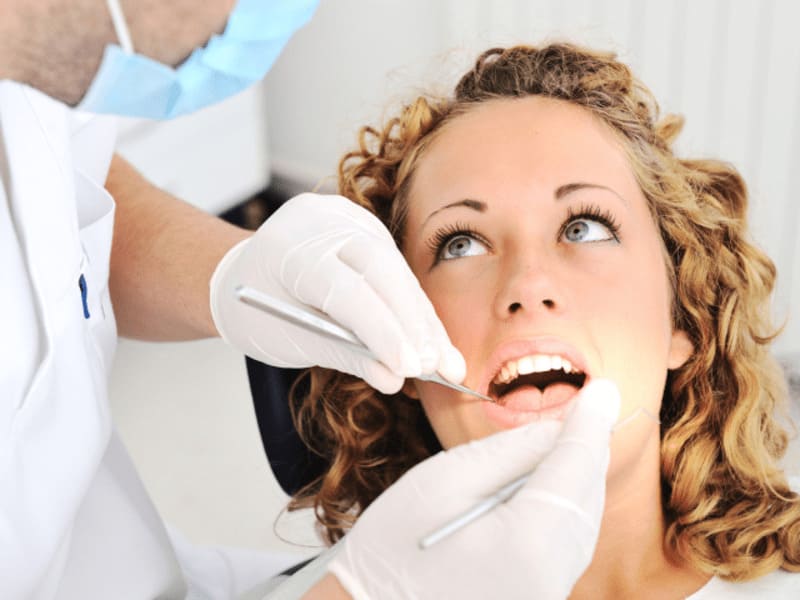
Even with advanced dental diseases, modern dentistry finds solutions for restoring teeth and masticatory function (dental implants, removable and fixed prosthetics, orthodontic treatment).
Dental problems are caused by a multitude of factors, including:
- poor oral hygiene;
- smoking and alcohol consumption;
- internal diseases;
- a diet high in sugar and baking;
- weakened immune system;
- hereditary factors.
If the first signs of oral disease (pain while eating or drinking, increased sensitivity of the teeth, plaque on the teeth) appear, you should immediately consult a doctor.

